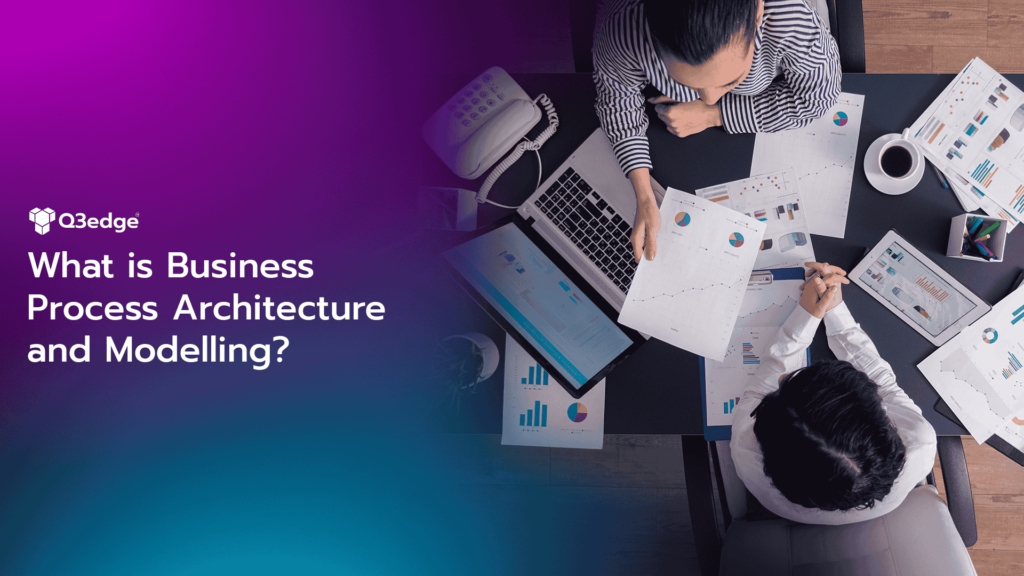What is Business Process Architecture and Modelling? Overview

In today’s rapidly changing business landscape, organizations are always on the lookout for ways to work smarter, cut costs, and keep their customers happy. It’s a challenging journey, but one powerful tool that can help is Business Process Architecture and Modelling (BPAM). This approach, which encompasses what is Business Process Architecture and Modelling, not only streamlines operations but also fosters a deeper connection between teams and their goals. This blog will provide a comprehensive overview of what BPAM is, its significance, and how it can transform the way businesses operate.
Let’s break the what is Business Process Architecture and Modelling in two categories
Understanding Business Process Architecture
Business Process Architecture (BPA) is all about mapping out the structure of your organization’s processes and showing how they work together to meet your goals. Think of it as a framework that brings together your vision, strategies, goals, processes, technology, and people to create a clear picture of how everything fits.
At a high level, BPA gives you a way to see roles, responsibilities, and workflows. This big-picture view helps you spot inefficiencies and find areas to improve. Here’s how it’s usually set up:
Top-Level Overview: Represents your company’s mission and main goals.
Process Categories: Here, major business processes are categorized based on functions such as sales, marketing, production, and customer service.
Detailed Processes: Breaks down each category into specific tasks that help you reach your objectives.
By establishing this structured approach, BPA enables organizations to maintain clarity and focus on their strategic goals.
What is Business Process Modelling?
Business Process Modelling (BPM) is the practice of creating visual representations of business processes. These models serve as blueprints that depict how tasks are performed within an organization. BPM can be utilized to analyze current processes (often referred to as “as-is” processes) and design improved future states (“to-be” processes).
The primary objectives of BPM include:
Identification of Inefficiencies: By mapping out existing processes, organizations can pinpoint bottlenecks or redundancies that hinder performance.
Standardization of Processes: BPM helps ensure that processes are executed consistently across the organization.
Facilitation of Communication: Visual models enhance understanding among stakeholders by providing a common reference point for discussions about process improvements.
The Importance of BPAM
Business Process Architecture and Modelling (BPAM) is essential for organizations aiming to optimize operations. Here’s why:
Alignment with Goals: BPAM ensures processes support strategic objectives, focusing resources on impactful initiatives.
Efficiency: By highlighting inefficiencies, BPAM enables streamlined operations and cost savings.
Better Decision-Making: Clear process visuals help leaders anticipate how changes will affect outcomes.
Risk Management: BPAM identifies process risks, allowing for proactive controls.
Change Management: BPAM provides a structured framework for integrating new processes smoothly, supporting agility in a dynamic environment.
Approaches to Business Process Architecture and Modelling
There are several approaches organizations can take when implementing BPAM:
Goal-Based Approach: This method focuses on aligning business processes with strategic goals by mapping Key Performance Indicators (KPIs) to critical processes. Tools like the Hoshin Kanri X Matrix are often used in this approach.
Reference Model-Based Approach: Organizations can leverage existing industry-specific frameworks (e.g., APQC for various sectors) to expedite the design process. This approach saves time by adapting proven models rather than starting from scratch.
Customer Journey Approach: This model maps out the entire customer experience from awareness through post-sales service, identifying critical touch points needing attention.
Function-Based Approach: This method decomposes business functions into detailed capabilities, allowing organizations to focus on their core competencies while ensuring all functions work together effectively.
Risk and Compliance Approach: This approach emphasizes maintaining compliance with industry regulations while managing risks effectively within the organization’s processes.
Benefits of Business Process Architecture and Modelling
Benefits of Business Process Architecture and Modelling
Clarity and Transparency: Stakeholders gain a clear understanding of workflows and responsibilities.
Increased Efficiency: Identifying redundancies allows for streamlined operations.
Better Decision-Making: A structured approach enables data-driven decisions.
Improved Compliance: Well-documented processes help maintain regulatory standards.
Agility in Operations: A robust BPAM framework allows for quick adaptation to market changes.
Choose the Best “Business Process Architecture and Modelling” Service
Choosing the right Business Process Architecture and Modelling service is essential for improving organizational efficiency. This service allows companies to map and refine their processes, aligning operations with strategic goals and streamlining workflows.
Q3edge stands out in this field, offering expertise in creating clear, actionable process models that enhance collaboration and reduce operational inefficiencies. With Q3edge, businesses can turn complex processes into manageable systems, boosting performance and enabling data-driven decisions for sustained growth. Partnering with Q3edge empowers organizations to optimize processes and achieve continuous improvement.
Real-World Applications
To illustrate the effectiveness of BPAM, consider a manufacturing company facing challenges with its production line due to inefficiencies in workflow management. By implementing BPA and BPM techniques:
The company mapped its current production process using flowcharts.
It identified bottlenecks where delays occurred frequently.
The team redesigned the workflow to eliminate unnecessary steps and introduced automation where possible.
As a result, the company experienced a significant reduction in production time and costs while improving product quality—demonstrating how effective BPAM can be in real-world scenarios.
Conclusion
In conclusion, Business Process Architecture and Modelling is an essential discipline for organizations seeking to enhance their operational efficiency and align their processes with strategic objectives. By providing a structured framework for visualizing and analyzing business processes, BPAM empowers organizations to make informed decisions that drive continuous improvement.
As businesses navigate an increasingly complex landscape, adopting BPAM practices will not only help them optimize their operations but also position them for long-term success in a competitive market. Whether you are looking to streamline workflows or ensure compliance with industry standards, investing in BPAM is a strategic move that can yield significant returns over time.
By embracing this approach, organizations can foster a culture of continuous improvement that ultimately leads to greater customer satisfaction and enhanced business performance.
